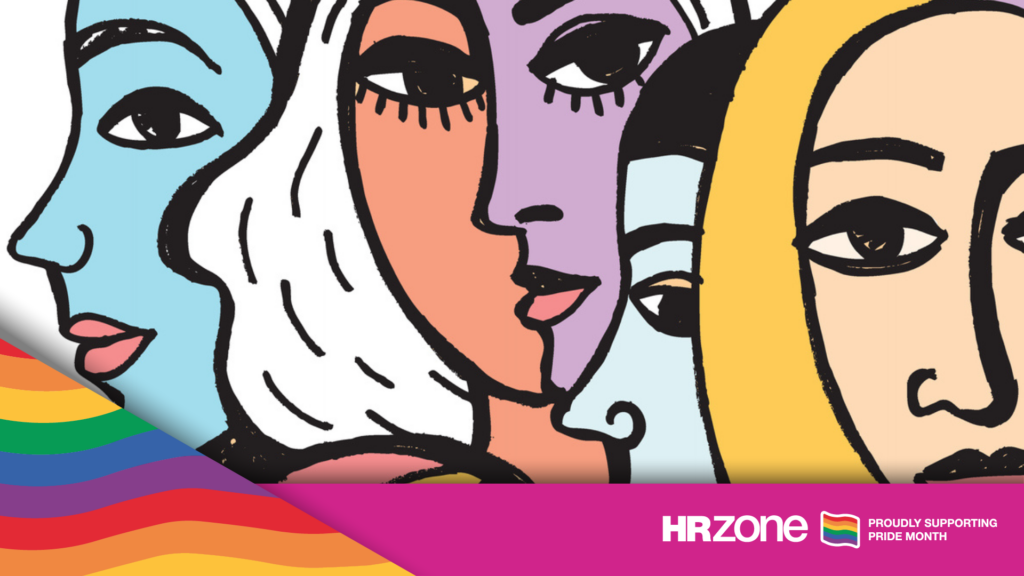It’s hard to estimate how many nonbinary people there are. The latest UK census quotes 0.5% of the population (262.000, the size of a medium-sized town) reporting the gender they live in doesn’t match the one assigned at birth. That is true for nonbinary people, but also of trans people, and nonbinary people might or might not identify as trans.
Research from Scottish Trans in 2016 paints a worrying picture of nonbinary people in the UK fearing exclusion, stigma and lack of opportunities, including within the workplace.
Only 4% of respondents always felt comfortable sharing their nonbinary identity at work – compared to 52% who never felt comfortable. In addition, 90% worried their identity wouldn’t be respected, 88% worried it would make their work environment more difficult and 55% worried it would impact on their career progression.
When done right, inclusion and diversity efforts make life better for everyone.
This research is seven years old and I hope those numbers would have improved since then as wider society becomes more aware of nonbinary gender identity. But still, there is a long way to go for nonbinary people to feel safe and comfortable with showing their authentic selves.
There is a lot more research to be done about nonbinary identity and what that means for people’s work and lives. It was promising to see it featured in the latest Census to set a baseline but more work is needed.
Raising awareness
We still need to raise awareness of nonbinary gender identity. Many people don’t know what that means, or what it looks like in practice for nonbinary people to navigate a life that is designed for two gender options that don’t really work for them, or how it feels when everything signals that there is no space for people like you. There are still only a few role models to help guide others on their own path.
If it makes sense for the person telling you about themselves, then you should respect their wishes. Inclusion isn’t a majority vote.
People also don’t take it seriously as an actual stable identity (I keep getting asked if I ‘have decided yet’) or think female-ish presenting nonbinary people need more feminist consciousness raising to come round to their side.
Organisations have a role to play in raising awareness of nonbinary identity and better educating their employees to ensure those identifying as nonbinary feel valued, respected and like they belong, authentically, within the business.
Practical steps to create non-binary inclusion at work
In my previous article, I wrote about my personal experience of coming out as nonbinary at work, and provided some guidance for those who may wish to do the same. In this second piece, I share guidance on how organisations can build a more supportive and inclusive environment for non-binary people at work.
1. Meet people on their terms
Your data is likely flawed so you won’t actually know how diverse your organisation or team really is. Be open and see what you learn about the awesome folks you work with or you are looking to bring in.
‘Hi everyone’ is better than ‘ladies and gentlemen’. A word like ‘people’ is a good plural term for, well, people (of all genders). When in doubt, ask. Language is often more flexible than you think, a lot of it really isn’t as hard as we sometimes make it. Normalise having pronoun conversations and add them to all signatures.
If people tell you what they want to be called, go with that. Learn to pronounce names. Things don’t have to make sense to you personally, or might jar with how you expect grammar to be, but if it makes sense for the person telling you about themselves, then you should respect their wishes. Inclusion isn’t a majority vote.
2. Have the conversations
Have sensible, solution-focused, supportive adult conversations with the aim to make things work. How that conversation goes will tell that person a lot about how safe they can feel with you, and how much you factor into their longer-term considerations.
Give people security where you can and check in with folks when the public discussion flares up again.
Be prepared to have rounds of conversations with more ‘stuff’ coming up as people learn to trust you. This might look like things keep getting messier every time you talk, but the mess was there all along, you just didn’t know about it. Take the growing trust as a positive signal and do something good with it. People remember, and people share.
3. Don’t assume
Steer clear of simple shortcuts. Think about what support might be needed. Somebody might be happy to work with or take business trips in countries where LGBT people face the death penalty. They might not be. Both decisions are understandable. Don’t assume either way.
Global professionals know this is complicated and, like everyone else, they will expect robust, supportive, practical, adult conversations. Some of these are at the gnarly detailed end of T&Cs. Be able to have those conversations.
4. The personal is, indeed, political (and vice versa)
Be aware what’s going on around you for the topic of gender, politically or societally. Know that your nonbinary and trans folks will follow the news and political and societal turmoils around gender closely. Whenever discussions flare up or legislation gets proposed, discussed, overturned etc., these are anxious times.
Don’t forget you’re a buyer in the market too. Use that to instigate positive change.
For you it might be a tiny headline somewhere on page 17 that you might have missed altogether, for people directly affected it might lead to a sleepless night discussing with friends, questioning their safety and place in society or questioning their future in the country. Keep that in mind, give people security where you can and check in with folks when the public discussion flares up again.
5. Push the envelope and make work work
If you are reading this you are likely in HR, Learning or a related role in that area. Making work work is your job, you can shine here and create something truly amazing for your folks. If people need flexibility and you can make it work, give them that flexibility.
There is research on the extra energy that masking or trying to fit in takes for folks in the minority and how much easier work felt when people got to work from home. Flexible arrangements can make life a whole lot easier so people can focus on bringing the awesomeness you hired them for.
This space has evolved a lot during the pandemic, so please don’t even think about going “back” to a kind of “normal” that didn’t work all that well for so many people. Go forward instead.
Making things better in practical terms for your people is far more important than how big your float is at pride or how many rainbow lanyards you hand out in June.
6. Throw your weight around
You have a voice in the market, in your industry, community, possibly even country. Use that to make a positive difference (and not just during Pride month).
Employers have an opportunity here to lead the way in looking beyond binary thinking – not just in terms of gender conversations, but more broadly.
Don’t forget you’re a buyer in the market too. Use that to instigate positive change. A ‘we value XYZ and our people need a clearer line on ABC, what are you going to do for us?’ sends a signal and should be a part of who you partner with for benefits, insurance etc., who you procure goods and services from, where you book your events and whose ideas you amplify by spending your money there.
Choose with intent and make it clear why you made that choice so people get feedback where it is due. This might start looking like work, but it will start moving the world in the right direction – one uncomfortable-but-necessary conversation at a time.
7. This is big. It also isn’t
When I design or run a session or project, it’s a session, not a nonbinary session. I’m at work to do my work, as the person I am, as the professional who happens to be nonbinary. Help make that good environment possible so your folks can do their thing.
Thinking beyond the binary
When done right, inclusion and diversity efforts make life better for everyone. I’d love all gender identities to be a part of that, and there also remains a lot of work to be done to better appreciate intersectionality too.
I’m seeing an increasing trend towards polarisation in society. Everything seems to increasingly come in two big options that force people to declare themselves for or against. Not just with regards to gender, but also in politics and when discussing social issues. It flattens and cheapens the discussion as things in life are rarely that polarised.
A lot of nuance gets lost, and a lot of other aspects no longer enter the option space. That concerns me a lot.
Employers have an opportunity here to lead the way in looking beyond binary thinking – not just in terms of gender conversations, but more broadly. This is so important for making a more liveable future for everyone and to make sure all ideas and voices get heard. It’s also hugely valuable for creative thinking, which is increasingly critical for businesses today.
If you enjoyed this article, read: There’s far more we could do to allow LGBTQI + employees to freely participate at work.
[cm_form form_id=’cm_65a14c3f5da64′]






